© 2025 MJH Life Sciences™ , Patient Care Online – Primary Care News and Clinical Resources. All rights reserved.
Puzzles in Pancreatitis: 3 Case Challenges for Primary Care
Severe epigastric pain radiating to the back in 2 patients and post-Whipple procedure complaints in another: 3 virtual puzzles in pancreatitis need solutions.
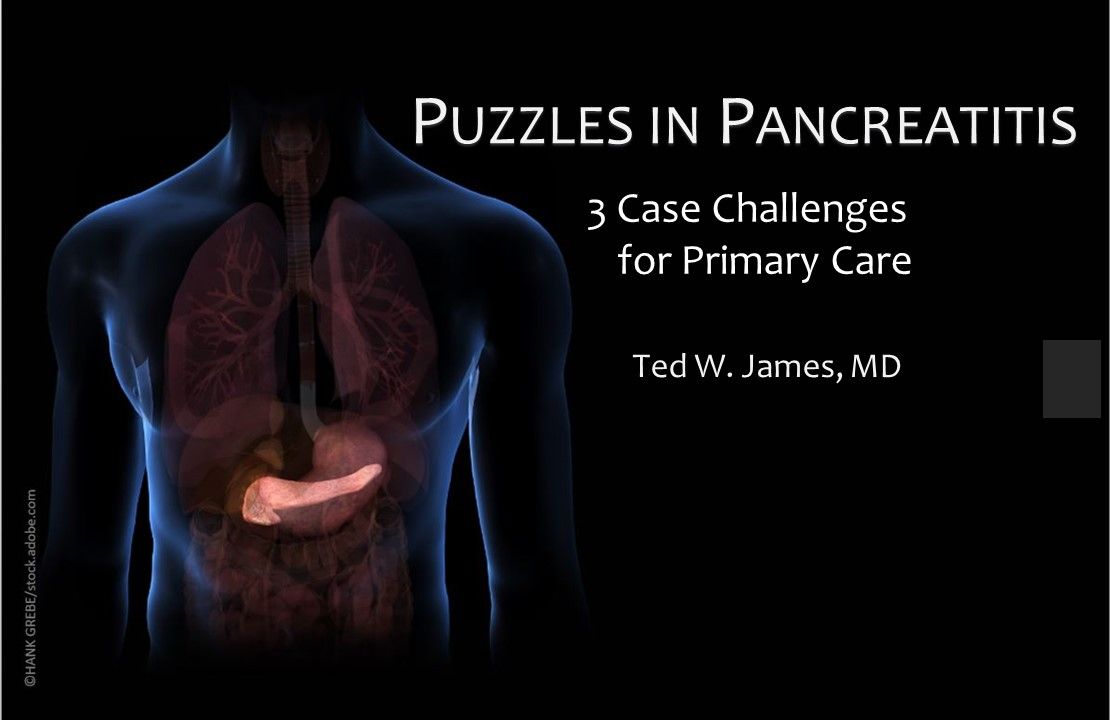
Two patients with severe epigastric pain radiating to the back and one with delayed post-Whipple procedure complaints are your 3 virtual puzzles in pancreatitis to diagnose and manage.
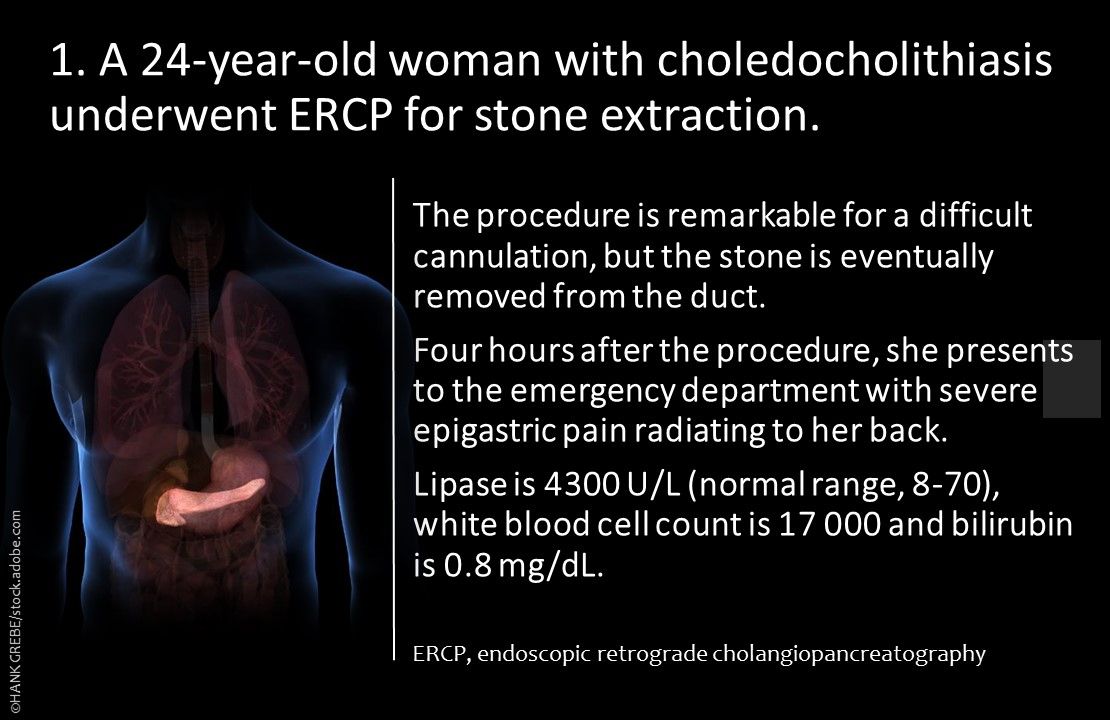
1. A 24 year-old woman with choledocholithiasis underwent ERCP for stone extraction. Cannulation is difficult but the stone is eventually removed. She presents to the ED 4 hours later with severe epigastric pain radiating to her back. Lipase: 4300 U/L; WBC: 17 000; bilirubin: 0.8 mg/dL.
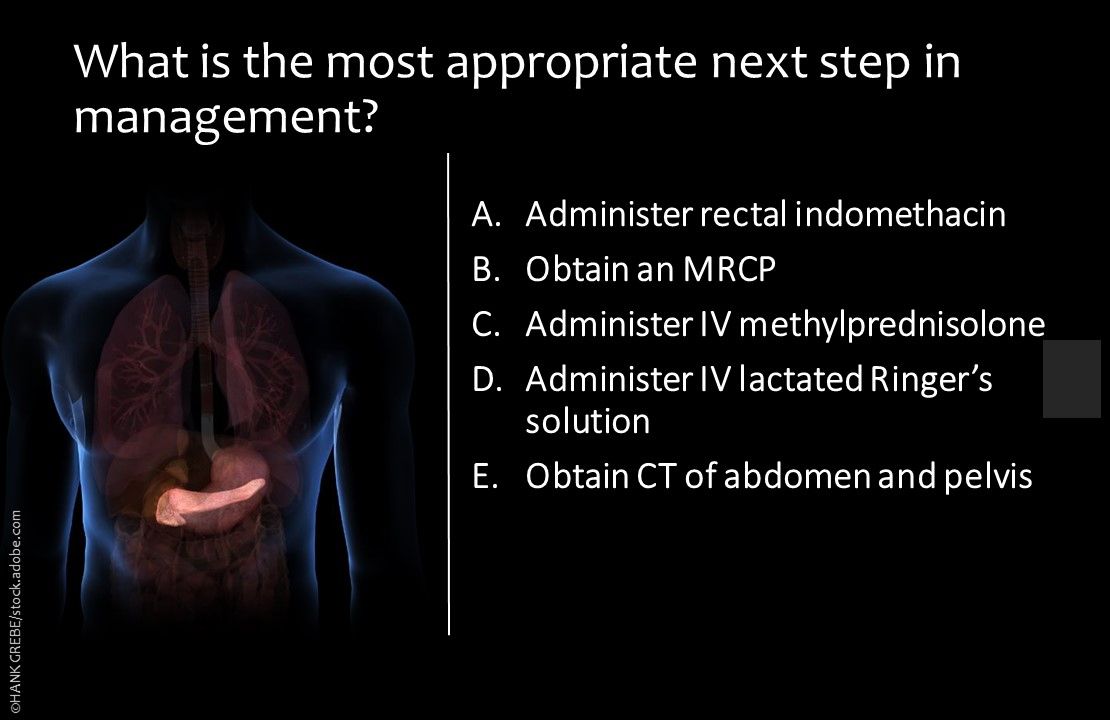
What is the most appropriate next step in management? A. Administer rectal indomethacin B. Obtain an MRCP C. Administer IV methylprednisolone D. Administer IV lactated ringer’s solution E. Obtain a CT of the abdomen and pelvis
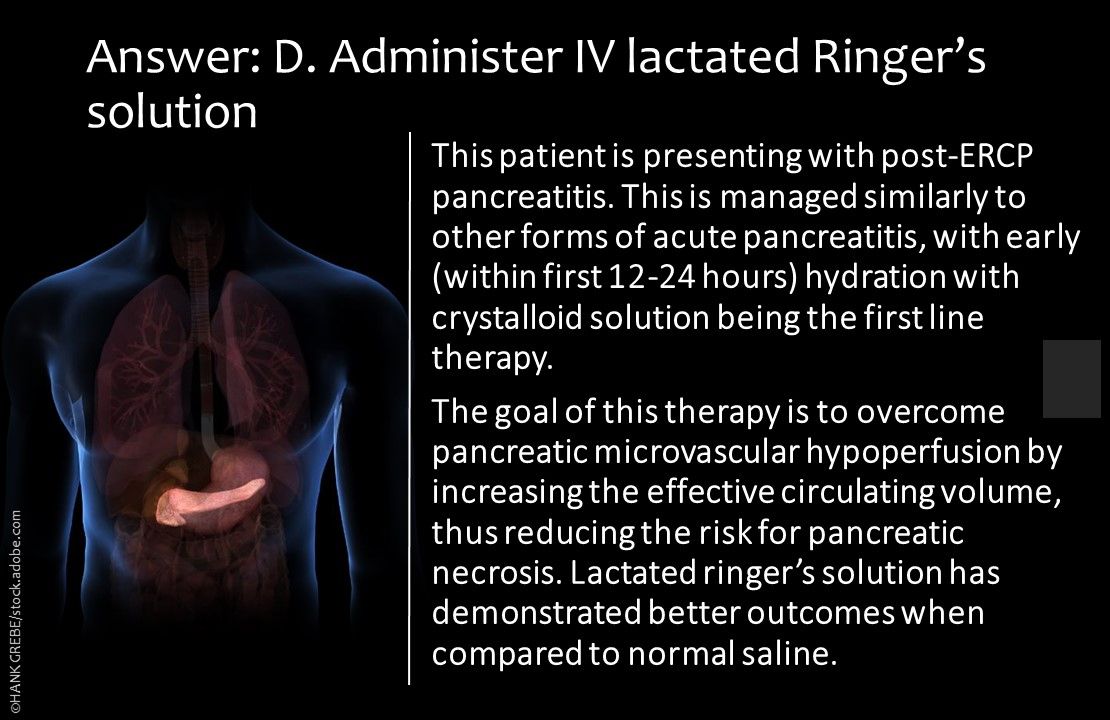
Answer: D. Administer IV lactated ringer’s solution. Post-ERCP pancreatitis is managed similarly to other forms of acute pancreatitis, with early hydration with crystalloid solution as first line. Treatment goal is to overcome pancreatic microvascular hypoperfusion by increasing effective circulating volume, thus reducing the risk for pancreatic necrosis. Lactated Ringer’s solution has demonstrated better outcomes vs normal saline.
Suggested reading: Wu BU, Hwang JQ, Gardner TB, et al. Lactated Ringer’s solution reduces systemic inflammation compared with saline in patients with acute pancreatitis. Clin Gastroenterol Hepatol. 2011;9:710-717.
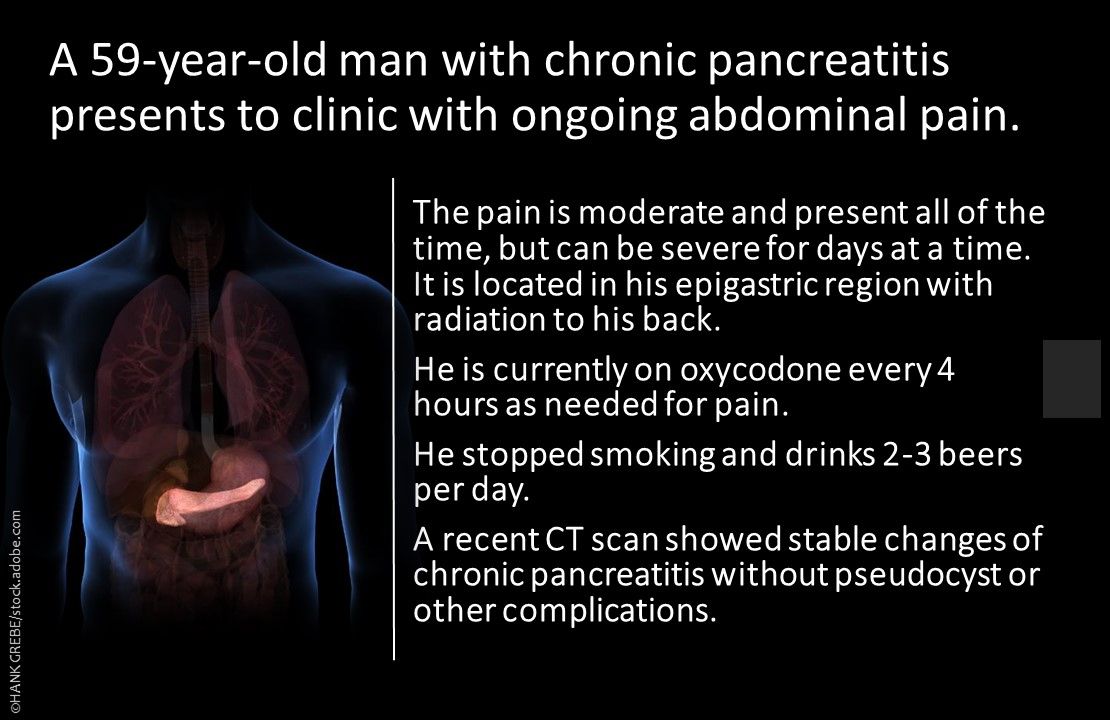
2. A 59-year-old man with chronic pancreatitis presents to clinic with ongoing abdominal pain. Pain is moderate, omnipresent, but is severe for days at a time. Location: epigastric region with radiation to the back. Rx: oxycodone q4 prn. He stopped smoking and drinks 2-3 beers per day. A recent CT scan showed stable changes of chronic pancreatitis without pseudocyst or other complications.
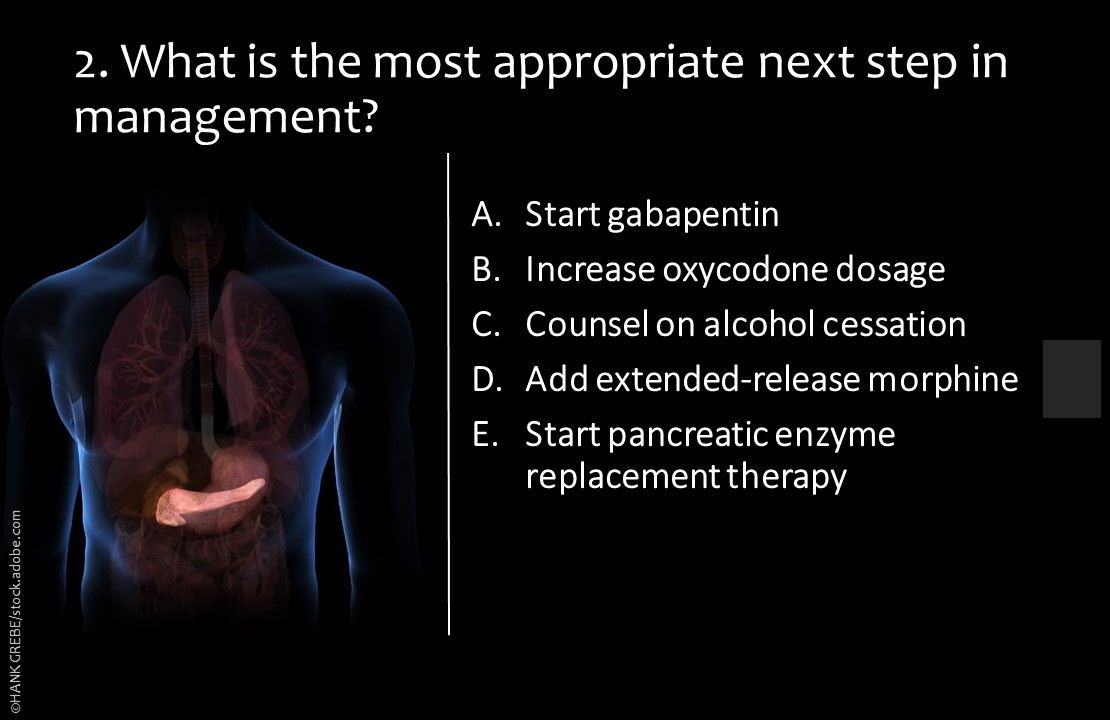
What is the next best step in management? A. Start gabapentin B. Increase oxycodone dosage C. Alcohol cessation D. Add extended release morphine E. Start pancreatic enzyme replacement therapy.
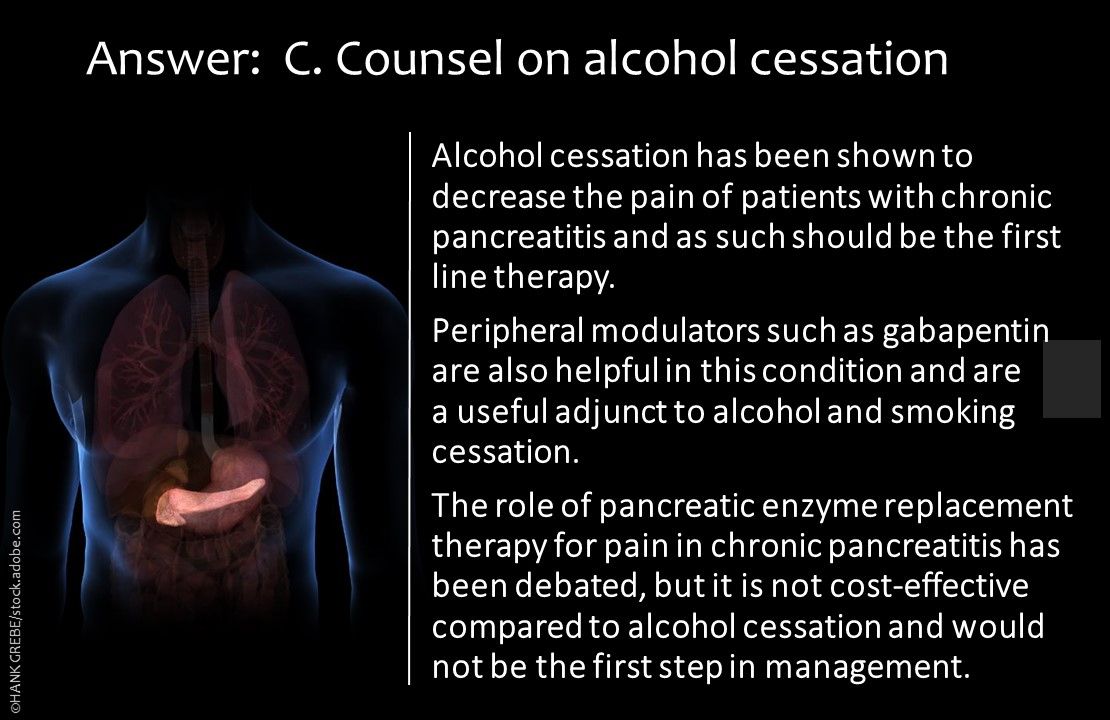
Answer: C. Counsel on alcohol cessation. Alcohol cessation has been shown to decrease chronic pancreatitis-related pain and should be the first line therapy. Gabapentin can be helpful and useful as an adjunct to alcohol and smoking cessation. The role of pancreatic enzyme replacement therapy for pain in chronic pancreatitis has been debated, but it is not cost-effective compared to alcohol cessation and would not be the first step in management.
Suggested reading: Strum WB. Abstinence in alcoholic chronic pancreatitis. J Clin Gastroenterol. 1995;20:37-41.
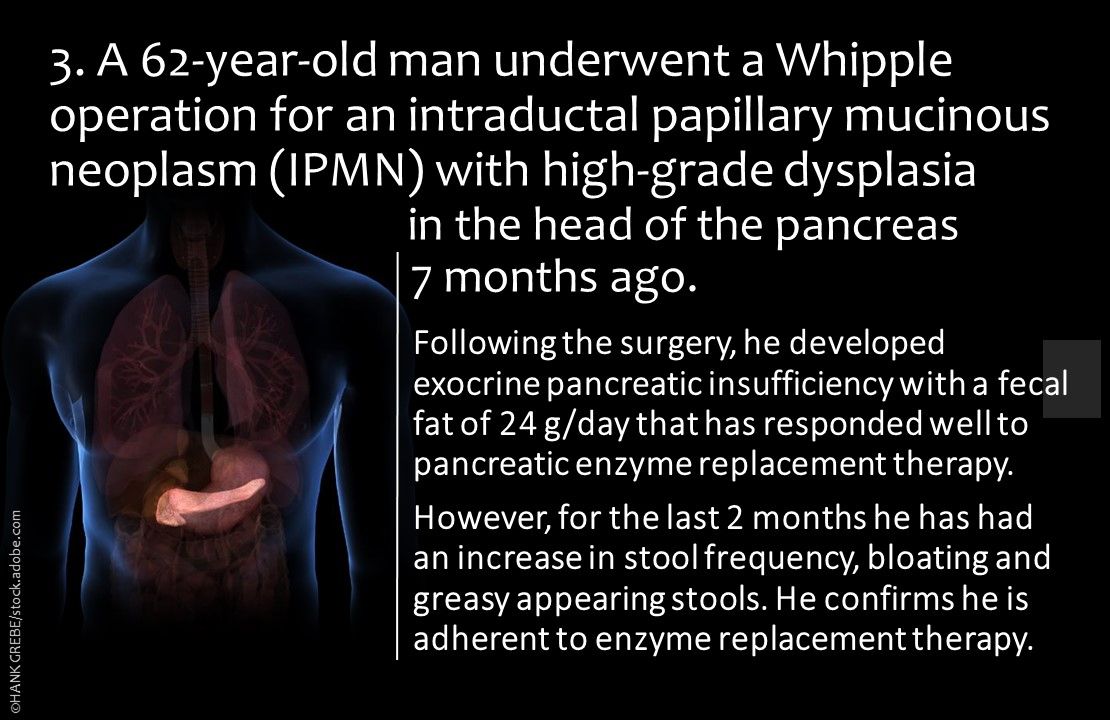
3. A 62-year-old man underwent a Whipple operation for an IPMN with high grade dysplasia in the head of the pancreas 7 months ago. He developed post-op exocrine pancreatic insufficiency (fecal fat of 24 g/day) that has responded well to pancreatic enzyme replacement therapy. For the last 2 months he has had an increase in stool frequency, bloating and greasy appearing stools. He confirms he is adherent to enzyme replacement therapy.
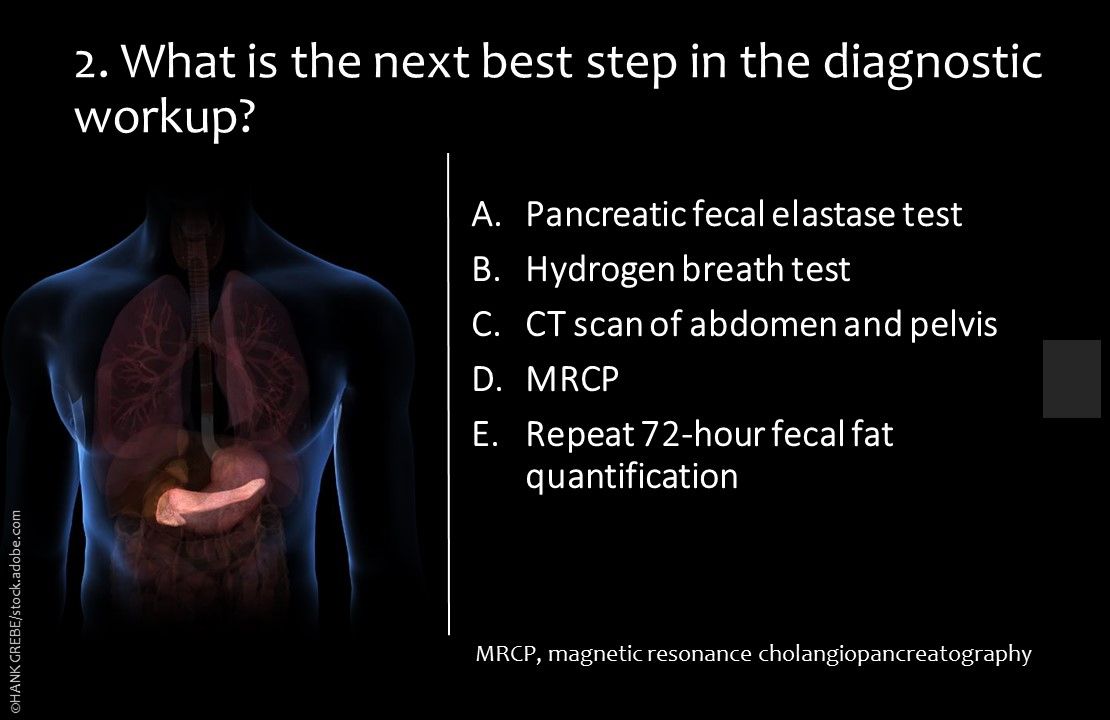
What is the next best step in the diagnostic workup? A. Fecal elastase test B. Hydrogen breath test C. CT scan of the abdomen and pelvis D. MRCP E. Repeat 72-hour fecal fat quantification

Answer: B. Hydrogen breath test. The patient has 2 significant risk factors for SIBO: surgically altered anatomy and exocrine pancreatic insufficiency. SIBO can lead to decreased efficacy of pancreatic enzyme replacement therapy and cause fat malabsorption to recur. Structural tests such as MRCP or CT are unlikely to provide any new information and the best test for SIBO is a hydrogen breath test.
Suggested reading: Forsmark CE. Management of chronic pancreatitis. Gastroenterology. 2013;144:1282-91.
Follow Dr James on Twitter: TedWJamesMD
Stay in touch with Patient Care® Online:
→ Subscribe to ourNewsletter → Like us on Facebook → Follow us on Twitter → Write or Blog for Patient Care® Online→ Follow us on LinkedIn
Ted W. James, MD is a fellow in the division of gastroenterology and hepatology in the department of medicine at UNC School of Mecdicine in Chapel Hill, NC.
Related Content:



